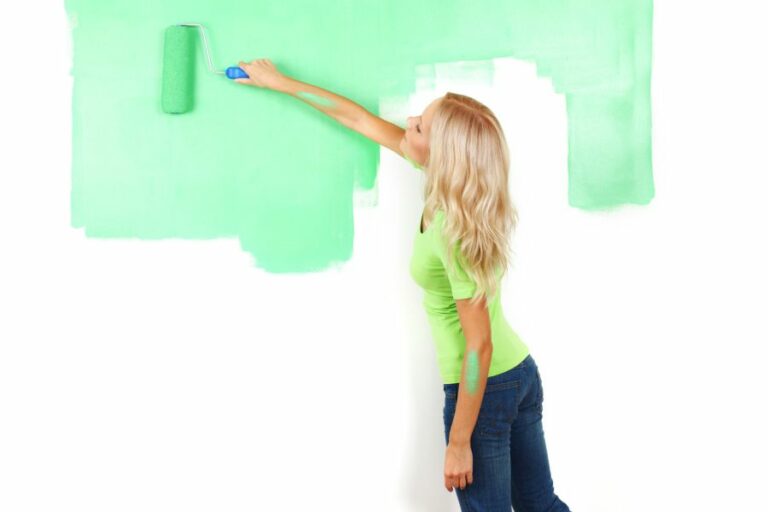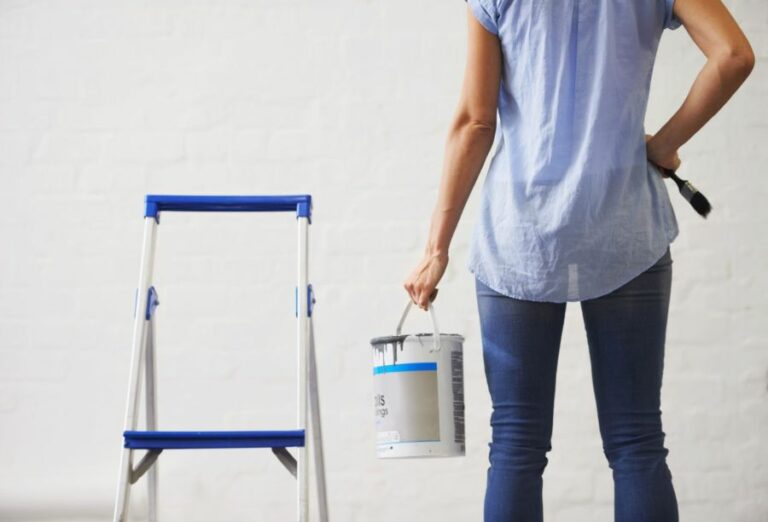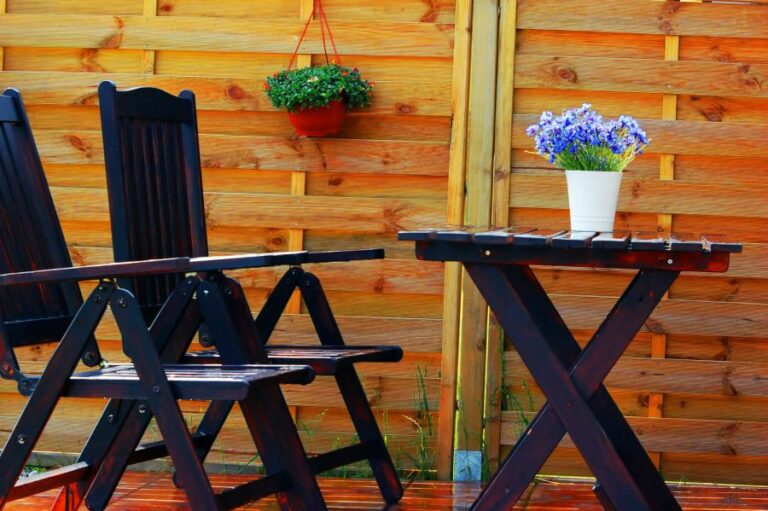Do You Need To Seal Outdoor Paint, 25 Things You Should Know
Are you tired of your outdoor paint peeling, cracking, or fading? It’s time to consider sealing your investment to protect it from harsh weather conditions and prolong its life. Our comprehensive blog post, “Do You Need to Seal Outdoor Paint,” provides valuable insights on the importance, benefits, and factors to consider when sealing your outdoor paintwork, helping you make an informed decision.
Do you need to seal the outdoor paint:>
Sealing exterior paint is not always necessary since modern outdoor paints possess high durability, water resistance, and color retention. However, applying sealant can protect surfaces like wood or porous concrete, combating threats like moisture, mildew, and chipping. Choosing optimal sealants, such as polyurethane or acrylic, and adhering to the compatibility prerequisites of your paint can significantly extend the longevity of your outdoor paint job.

Discover the importance of sealing outdoor paint, the various sealer options, and how they protect against weather-related damage. Learn when and how to apply sealers to maximize durability and ensure a long-lasting, vibrant paint job. Read on!
Contents
- 1 Is it Necessary to Apply Sealant to Exterior Paint?
- 2 Is it Necessary to Apply a Sealant Over Exterior Paint?
- 3 What is the Most Effective Sealant for Exterior Paint Applications?
- 4 What is the process for sealing outdoor artwork?
- 4.1 • Embarking on the Preservation Path: Prerequisites
- 4.2 • The Magnum Opus of Protection: Sealing Outdoor Art
- 4.3 • Seamlessness in Sealing: The Summation of Success
- 4.4 • Are You Supposed to Seal Paint? A Comprehensive Guide on Paint Sealing Techniques
- 4.4.1 – Preserving Aesthetic Appeal: Indispensable Necessity of Paint Sealing
- 4.4.2 – Decoding the Intricacies: Navigating the Labyrinth of Various Paint Types
- 4.4.3 – A Cornucopia of Sealants: Cherry-picking the Quintessential Armor
- 4.4.4 – Unveiling the Artisan’s Technique: Seamless Execution of Paint Sealing
Is it Necessary to Apply Sealant to Exterior Paint?
• The Importance of Protecting Your Exterior Paint Job
The exterior of your home or property is constantly exposed to the whims of nature: be it blazing sunlight, relentless rain, or even the occasional snowstorm. In such a scenario, the significance of using optimum outdoor paint cannot be emphasized enough.
However, the question lingers – do you need to seal outdoor paint in order to safeguard it against the capricious elements?
• The Protective Role of Sealants
– The Marvels of Modern Chemistry
Throughout history, science has sought to produce breakthroughs for the betterment of mankind; as such, it stands to reason that today’s exterior paints are a testament to human ingenuity.
These paints are concocted to withstand the barrage of environmental onslaughts, fortified with technologies that enable them to possess high durability, water resistance, and color retention. Such advancements mean that sealing outdoor paint is, in most cases, superfluous.
– The Opposite Angles of Application
However, there may be instances where sealing your exterior paint becomes a necessity. Employing a sealant might prove prudent if you work on a surface that demands extra protection, such as wood or porous concrete.
A quality sealant will provide an additional layer to combat ever-looming threats like moisture, mildew, and chipping.
• Identifying the Optimal Sealant
– Polyurethane’s Bountiful Benefits
In the realm of exterior sealants, few can match the inimitable properties of polyurethane. Its virtues include flexibility, resistance to abrasion, and the capacity to repel both water and ultraviolet light with ease.
When wielded correctly, polyurethane sealant can amp up the longevity of your paint job, making it a formidable ally in exterior beautification projects.
– Acrylic: The Versatile Vanguard
As the paragon of adaptability, the acrylic sealant is prized for its compatibility with disparate surfaces and paints. Its inherent elasticity and impermeability make it an excellent choice for safeguarding your outdoor paint job.
Moreover, its fast-drying nature ensures that your project proceeds in a swift and hassle-free manner.
• The Process of Sealing
– Biding the Duration: Patience Pays Dividends
Once you have applied the paint to the designated surface, it can be temptingly tantalizing to leap at sealing it. Resist the siren call of hastiness! Permit the paint ample time to accomplish a full and flawless cure; only then can you proceed with the sealing process.
– Seal the Deal: Employing the Products
Next, ensure your choice of sealant adheres to the compatibility prerequisites of your paint. For instance, oil-based sealants harmonize with oil-based paints, while water-based sealants meld with water-based paints.
Apply the sealant uniformly with an appropriate brush or roller, following the recommended number of coats.
• Reaping the Rewards
Following the steps elucidated in this article, you are poised to reap the benefits of a well-protected paint job. While not always required, sealing can bolster the resilience of your exterior paint, allowing it to endure nature’s unwavering advances.
Ultimately, the decision to seal outdoor paint hinges on factors like the surface in question and the prevailing environmental conditions.
Factors | Description | Sealing Required? |
|---|---|---|
Type of paint | Quality of paint used for the outdoor project, including whether it contains built-in sealer. | Depends on the type and quality of paint. |
Substrate or surface | The type of surface that the outdoor paint is applied to, including wood, metal, or concrete. | Sealing may be necessary for porous or moisture-prone surfaces. |
Weather conditions and exposure | How exposed the painted surface is to sunlight, rain, or other extreme weather conditions. | Sealing may be required in areas with persistent high humidity, direct sunlight, or frequent temperature fluctuations. |
Expected wear and tear | The possibility of the outdoor painted surface being exposed to physical damage or traffic. | Sealing may be recommended for high-traffic or high-impact areas to increase protection and longevity. |
Desired finish | The type of appearance and finish the outdoor paint project is intended to have, including glossy or matte finishes. | Sealing may be required to achieve the desired finish or to add extra protection to the painted surface. |
Is it Necessary to Apply a Sealant Over Exterior Paint?
• Scrutinizing the Imperatives of Weatherproof Barrier Applications
As a discerning homeowner or professional painter, you may often contemplate the merits of applying a sealant over your exterior paint job. The confluence of weather, ultraviolet radiation, and environmental pollutants can significantly impact the longevity and radiance of a painted surface.
– The Protective Panoply: Examining the Rationale Behind Sealant Selection
While exterior paint can be unyielding to commonplace elemental wear and tear, a steadfast sealant application can help prolong a paint job’s durability and luster.
Here, we dissect the fundamental reasons for selecting a sealant in tandem with paint application:
Subverting Unsightly Pockmarks, Cracks, and Fading
An unsealed painted surface becomes increasingly susceptible to damage as your domicile grapples with everyday temperature variations. A sealant curbs these malevolent forces by bridging minute fissures present in the paint.
Consequentially, it forms a bulwark against water intrusion, wind erosion, and ultraviolet degradation.
Alleviating the Onslaught of Microbial Adversaries
Unchecked, a riotous melange of microorganisms can colonize the surface of exterior paint. The accumulation of mildew, mold, and algae can harm the painted facade.
A carefully chosen sealant harbors anti-microbial additives that standoff fungi and microbial ingress, safeguarding your paint from discoloration and unsightly growths.
Overhauling Longevity: An Investment in Aesthetic Exuberance
Inescapably, the cost of labor and materials for exterior paint jobs can be onerous. A quality sealant application extends the life expectancy of an exterior paint job, ultimately proving to be a prudent and cost-effective investment.
This increased longevity translates to fewer paint touch-ups and a prolonged period of visual splendor for your home or building.
A multitude of seal troupes vie for your consideration, each distinct sporting characteristic that appeals to varied preferences and requirements.
As you traverse the landscape of sealant options, the following key parameters will guide you in making an educated selection:
The Manifest Traits of Resinous Protection
- Acrylic Sealers: Championed for their mass appeal, acrylic sealers provide an affordable and versatile option for most exterior paint surfaces. Acrylic varieties offer ultraviolet resistance, water repellence, and facile application. However, they may lack the robust long-term durability of their more premium counterparts.
- Silicone Sealers: Gaining traction amongst discerning applicators, silicone-based sealants tend to be more expensive but boast exceptional water resistance and breathability. Silicone sealers effectively repel water while simultaneously allowing trapped moisture to escape, leading to heightened longevity.
- Elastomeric Sealers: Pinnacle contenders in the realm of paint protection, elastomeric sealants deliver a highly pliable layer that flexes in tandem with the paint surface. This elasticity mitigates the propensity for cracks and degradation over time. This premier option, while costlier, provides an unmatched level of fortification.
– The Finesse of Application: Embracing the Art of Sealant Dynasty
To achieve optimal results with your chosen sealant, heed the follies of haphazard application:
- Surface Preparation: An impeccable paint surface is crucial for the sealant to perform its protective duties. Remove any debris, grime, and loose paint, ensuring the area is pristine before sealant application.
- Timing: Sealant application should occur once the exterior paint has cured. Depending on the paint type, humidity, and temperature, this process may take several weeks.
- Technique: Employing the appropriate tool, be it a brush, roller, or spray gun, is paramount to seamless sealant application. Adhere to the manufacturer’s guidelines to evade suboptimal outcomes.
In conclusion, applying a sealant over exterior paint is a sagacious investment in your painted surface’s long-term performance and aesthetic appeal.
By acquainting yourself with the variety of sealant options and the nuances of their application, you can decipher the optimal sealing solution for your project and foster an enduring display of your home’s magnificence.
Question | Answer |
|---|---|
Do you need to seal over the exterior paint? | It depends on the type of paint used and the desired level of protection. High-quality exterior paint will usually provide sufficient protection without a sealer. However, if the paint is lower-quality or additional protection from UV rays, extreme weather conditions, or high-traffic areas is desired, a sealer can be applied. |
What is the Most Effective Sealant for Exterior Paint Applications?
The pursuit of reconstructing one’s domicile often involves the crucial matter of selecting the consummate exterior sealant to safeguard the vibrancy of the paint.
An impeccable sealant bestows numerous advantages: it maintains chromatic brilliance, provides fortification against elemental adversaries, and extends the paint’s longevity.
In the vast sea of alternatives, singling out a matchless sealant might appear labyrinthine; fear not, for this discourse shall dissect the complexities and present you with unambiguous elucidations.
• Polyurethane: A Tenacious Force
Polyurethane sealants emerge as a formidable contender in the dominion of exterior paint protection. Boasting unparalleled elasticity, these synthetic polymers offer exceptional resistance to weather-induced damage.
The polyurethane’s innate tenacity establishes an impervious abode, safeguarding the paint from ultraviolet radiation, dampness, oxidative decay, and temperature fluctuations.
– Advantages of Polyurethane Sealants
- Robust Elasticity: Polyurethane sealants excel at accommodating substrate movement, hence, thwarting the emergence of fissures or ruptures.
- Moisture Resistance: Warding off mold and mildew becomes child’s play, as the sealant resists seepage, ensuring a dry sanctuary for the paint.
- Temperament to Temperature: Undeterred by climatic capriciousness, this sealant’s valor remains unshaken.
– Caveats to Consider
Despite their laudable attributes, polyurethane sealants are riddled with imperfections. These include laborious application procedures, delicate curing requirements, and relatively higher monetary investments.
• Acrylic: A Paragon of Affordability
Perhaps an ideal solution for judicious savers, acrylic sealants offer a budget-friendly option for the prudent. Comprised of polymers derived from esters or alkyl acrylics, this sealant’s resplendence lies in its adaptability to myriad surfaces.
– Advantages of Acrylic Sealants
- Amicable to the Purse: The frugal caretaker will find solace in the affordability of acrylic sealants.
- Straightforward Installation: Venturing into the realm of DIY becomes less daunting, thanks to the easily-manageable nature of acrylic sealants.
- Expedient Curing: Acrylic-based solutions require relatively little time to solidify, resulting in a nimble cocoon of protection for the paint.
– Caveats to Consider
The acquiescent nature of acrylic sealants comes at the cost of durability. Offering relatively lesser endurance to environmental hostility, this sealant category may necessitate more frequent maintenance.
• Silane-Siloxane: The Hybrid Hero
Residing at the pinnacle of innovation, silane-siloxane sealants present a harmonious amalgamation of silane (a chemical compound with silicon-hydrogen bonding) and siloxane (silicone-oxygen linkage).
The serendipitous marriage culminates in a watertight amour for exterior paint, with adept resistance to efflorescence and alkali assault.
– Advantages of Silane-Siloxane Sealants
- Impeccable Water Repulsion: When water infiltration threatens your paint’s sanctity, the microporous nature of silane-siloxane sealants leaps into action, ensuring a stalwart defense.
- Alkali and Efflorescence Resistance: These hybrid sealants offer an unsullied conscience as they diligently deter the nefarious effects of alkali ingress and efflorescence.
- Semi-transparent Preservation: Choosing this sealant will reward you with a barely perceptible layer, ensuring your paint’s aesthetics remain undisturbed.
– Caveats to Consider
Silane-siloxane sealants exhibit feeble protection against ultraviolet radiation and temperature fluctuations. Additionally, the exorbitant price tag attached to these high-performance sealants can incite apprehension in some.
• Synthesis: Seeking the Pinnacle of Perfection
In summary, the quest for the quintessential exterior paint sealant can culminate in various outcomes, contingent on one’s priorities. To achieve the apex of durability, polyurethane sealants hold an indomitable sway. If frugality is your guiding compass, acrylic sealants extend a charm of affordability.
For those who revere the fusion of novel technologies, silane-siloxane sealants beckon with a tantalizing allure. Succinctly, the decision ultimately hinges on personal preferences and circumstances, and an amalgamation of knowledge and intuition shall illuminate the path to triumphant endeavors.
Sealant Name | Description | Pros | Cons |
|---|---|---|---|
Acrylic Sealant | Water-based sealant that provides flexibility and durability | – Easy to apply – Eco-friendly – Quick drying | – Less durable than other options – Not ideal for high-traffic areas |
Polyurethane Sealant | A strong and versatile sealant with great resistance to weather, chemicals, and wear | – Excellent durability – Great weather resistance – Versatile, can be used on various surfaces | – Longer drying time – Some types may yellow over time |
Silicone Sealant | A flexible and waterproof sealant that adheres well on various surfaces | – Flexible – Waterproof – Long-lasting | – Difficult to remove – May require specialty paint to cover |
Polysulfide Sealant | A highly resistant sealant designed to withstand harsh conditions | – Chemical and weather resistant – Long-lasting – Can be used on a variety of surfaces | – Difficult to work with – Strong odor – Requires longer curing times |
What is the process for sealing outdoor artwork?
Creating captivating artwork that withstands the elements and continues to enchant viewers over time takes particular skill and an understanding of the right materials. Sealing your masterpiece for outdoor display involves a blend of artistry and expertise, an amalgamation of technique and craftsmanship.
• Embarking on the Preservation Path: Prerequisites
Before jumping into the actual sealing process, let’s explore the crucial prerequisites to ensure the optimal longevity of your art.
– Choice of Canvas: Connoisseur’s Comfort
Embracing the proper canvas is quintessential for yielding a masterpiece with the potential to endure Mother Nature’s caprices.
To achieve an enviable level of resilience, opt for materials such as marine-grade plywood, composite boards, or moisture-resistant wooden panels, which easily outshine traditional options.
– Paint Selection: Durable Dyes x Persistent Pigments
The very essence of your artwork, those mesmerizing hues, and shades, provides the foundation for an enduring spectacle.
Utilizing paint specifically designed for outdoor applications or high-quality acrylics with UV-resistant properties, you can garner unparalleled persistence in your composition, safeguarding its allure against relentless sun rays and intemperate weather.
• The Magnum Opus of Protection: Sealing Outdoor Art
Now that we have acquainted ourselves with preliminary considerations, it’s time to delve into the labyrinth of protective methods for your external artwork.
– Prime-Time: The Basal Barrier
To commence the journey of safeguarding your artful creation, initiate the process armed with a primer.
Utilizing a high-quality exterior primer on the selected canvas will establish a formidable bastion, inhibiting moisture ingress or unwelcome disintegration. Make certain to bestow ample time for the primer to cure-patience is your ally in this critical step.
– Varnishes: Vivacious Vexguards
Choosing the enviable varnish offers further armament, exhibiting deft dexterity against unwanted external influences. Once your paint dries, gracefully employ a thin layer of UV-resistant varnish, allowing time for the evaporation of the solvents.
Subsequently, apply at least two additional layers, respecting the drying intervals recommended by the manufacturer. Opt for varnish with UV protection and water-resistant properties, adding an extra layer of guardianship to your painting.
– Seal the Deal: Caulks & Adhesives
To reinforce the perimeter of your painting, employ an adhesive, such as silicone caulking or acrylic-based sealant. This furtive reinforcement will inhibit the invasion of damaging condensation or benevolent water droplets.
Appraise the label of the chosen adhesives to ascertain their efficacy against the outdoor onslaught.
– Fortification Finale: Framing & Installment
Adorning your esteemed composition with a robust frame is the conclusive act of sealing your outdoor painting. Utilizing moisture and UV-resistant materials such as treated wood or metal, your frame should cunningly cradle your canvas, shielding its delicate edges like a steadfast sentinel.
When installing the artwork, take preventative measures to avert water intrusion, ensuring there’s no direct contact between the canvas and its supporting surface.
• Seamlessness in Sealing: The Summation of Success
In the world of outdoor art preservation, attention to detail is paramount, as delicate intricacies culminate in a resounding masterpiece that perseveres against the passage of time and the whims of nature.
Through fastidious adherence to the aforementioned techniques, from the felicitous selection of materials to the final melange in sealing, your artwork can revel in its triumphant dance outside, enchanting all those who behold its exquisite grace.
The invigorating embrace of Fresh Air Galleries shall be your outdoor art’s playground, as nature’s ephemeral caress leaves the immortal strokes of your canvas untouched, a testament to your artistic prowess and the intricate tangos of sealing success.
| How do you seal outdoor paintings? | |
|---|---|
| 1. Choose the right paint | Use weather-resistant and lightfast acrylic or oil paints on a properly primed surface. |
| 2. Allow the painting to dry properly | Allow the painting to dry for at least 24 hours for acrylics or a longer time for oils. |
| 3. Apply a suitable sealer | Choose a UV-resistant and water-repellent varnish or sealant specifically designed for outdoor use. |
| 4. Apply the sealer correctly | Follow the manufacturer’s instructions and apply the sealer evenly, covering the entire painting. |
| 5. Allow the sealer to dry completely | Let the sealer dry according to the manufacturer’s instructions before exposing your painting to the elements. |
| 6. Maintain the sealant | Periodically check the painting for signs of wear and reapply the sealant as necessary. |
• Are You Supposed to Seal Paint? A Comprehensive Guide on Paint Sealing Techniques
– Preserving Aesthetic Appeal: Indispensable Necessity of Paint Sealing
In our quest to breathe life into drab spaces, adding vibrant hues often takes center stage. But is the painter’s craft simply a matter of hue and shade? One may surmise, with a touch of trepidation: are we supposed to seal paint too?
Indeed, encapsulating the resplendent oeuvre of color within a fortuitous shield remains the herculean task for anyone endeavoring to provide longevity to their painted surfaces.
Paint sealing, an oft-overlooked yet paramount aspect of the painting process, repels the harbingers of deterioration, rendering them obsolete in the face of its protective might.
To delineate the indelible significance of paint sealing, one must begin by elucidating the disparate array of paint varietals that inundate our markets today.
- Acrylic Paints: Transcending realms of artistic expression, acrylic paints are ubiquitous in their unparalleled versatility. The inherent water-based composition, while resistant to moisture, necessitates an additional layer of protection through sealants to repel efflorescence, an insidious agent of degradation.
- Oil-Based Paints: A time-honored choice for connoisseurs of robust, viscous mediums, oil-based paints boast a certain degree of inbuilt resilience. However, an inviolable truism remains: to preserve the paint’s vibrancy unfettered by the corrosive grasp of atmospheric agents, it behooves us to apply appropriate sealants.
- Latex Paints: Comprising a melange of water, pigment, and polymer, latex paints offer an easily replenishable option for the environmentally-conscious painter. While boasting a modicum of built-in fortification, sealing these surfaces is an indisputable necessity to insulate them from wear and tear.
– A Cornucopia of Sealants: Cherry-picking the Quintessential Armor
Choosing the consummate paint sealant hinges upon shrewd discernment and a proclivity for selecting the ideal counterpart for the paint and surface in question.
- Polyurethane Sealants: As steadfast merchandises that stand guard with a glossy or matte finish, polyurethane sealants cater to acrylic and oil-based paint varieties. Their propensity to withstand the torrential onslaught evokes admiration, shielding artworks from ultraviolet radiation and moisture alike.
- Acrylic Sealants: A bespoke companion to acrylic paints, these sealants chart the course for enhanced longevity and impermeability. Their fast-drying alchemy, while preserving the paint’s authentic essence, retains subtleties that define the nuances of an artwork.
- Silicone Sealants: A stalwart in the oeuvre of sealants, silicone variants prize flexibility and adhesion above all else, presenting a formidable choice for exterior surfaces. Their capacity to repel water renders them an indispensable ally against the ravages of time.
– Unveiling the Artisan’s Technique: Seamless Execution of Paint Sealing
A euphonious symphony of deft strokes and nimble precision paves the way for efficacious paint sealing, rendering the process unobtrusive while ensuring a harmonious blend.
Step 1: Priming the Canvas
Preparation usurps the mantle of the cardinal virtue, heralding a scrupulously clean, sanded, and dust-free surface to accentuate the sealant’s reliability.
Step 2: Selecting the Instrument
Connoisseurs may indulge in the gamut of standard paintbrushes, foam brushes, or rollers, keeping in mind the idiosyncrasies of the sealant’s viscosity.
Step 3: The Divine Dance
Commence by applying measured strokes along a linear path, exhibiting equanimity and composure. Allow ample time for each layer to bequeath its mark upon the surface before embarking upon subsequent layers, and voila, the painted tapestry is sealed.
In essence, paint sealing unveils its irrefutable supremacy as a pivotal instrument that safeguards the painted creations we hold dear.
As protectors of the arts, it is both our privilege and duty to accord the sanctity of painting, sealing its due acknowledgment and transcending the ephemeral realm of color to immortalize our mark upon the world.







